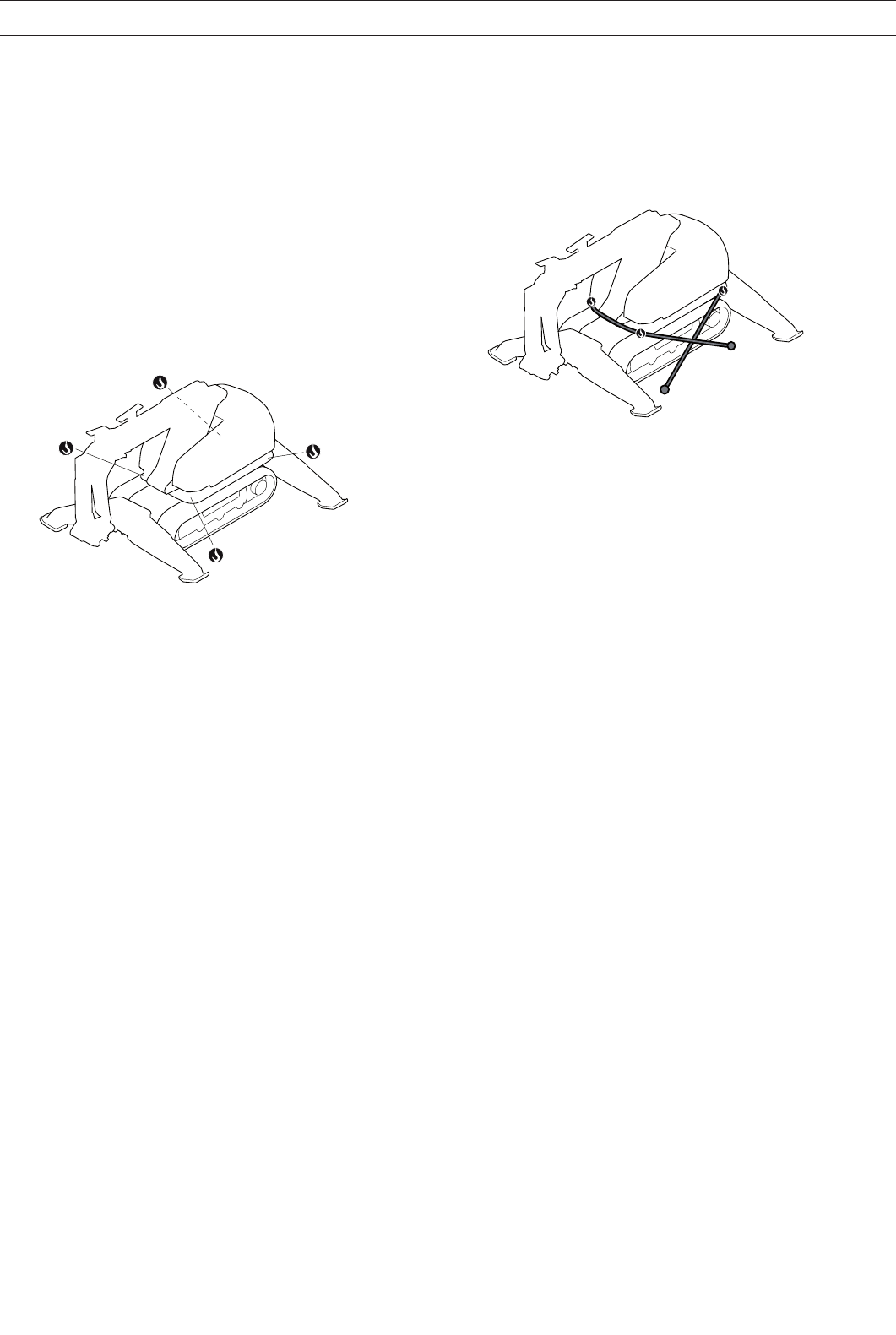
Transport and storage
Lifting the machine
• When lifting the machine there is a risk of injuring
persons or damaging the machine or the surround-
ings. Defi ne the risk area and check that nobody is
present within the area when lifting.
• Use an approved lifting device to secure and lift
heavy machine parts. Also ensure that there is
equipment to secure machine parts mechanically.
• Retract the arm system. The centre of gravity must
be as close to the machine’s centre as possible.
• The lifting equipment must be attached at all the
machine’s lifting eye bolts.
• Lift slowly and carefully. Make sure that the lift is in
equilibrium and if the machine starts to lean, rectify
it by using an alternative lifting device or change
the position of the arm system.
• Ensure that the machine’s parts are not crushed or
damaged when lifting and that the machine does
not hit surrounding objects.
Loading and unloading using a ramp
• Ensure that the ramp is intact and the right size for
the machine.
• Check that the ramp is free of oil, mud or anything
else that might make it slippery.
• Ensure that the ramp is properly secured to both the
vehicle and the ground. The vehicle being used for
transportation must also be secured so that it cannot
move.
Transport
• The machine may only be transported on a fl atbed
truck or a trailer that is approved for the machine’s
weight, refer to the machine’s rating plate. The
remote control must be properly protected in the
vehicle during transportation.
• Check applicable road traffi c regulations before
transporting on public roads.
The machine’s position on the loading platform
• Position the machine against the front edge of the
platform in order to reduce the risk of it sliding
forward if the vehicle brakes.
• Manoeuvre the arm system so that it is resting
against the platform, positioned as low as possible.
Extend the outriggers without lifting the machine.
Securing the machine
• Secure the machine with approved tightening
straps. Use the machine’s lifting eye bolts. Ensure
that no part of the machine are squashed or dam-
aged by the tightening straps. It is a good idea to
cover the machine.
• Tools and other equipment must be secured with
separate tightening straps.
• Regularly check that the load is secure during
transportation.
Storage
• Remove the tool from the machine.
• Retract the arm system to attain a centre of gravity
that is as low as possible and to save space.
• Store the equipment in a lockable area so that it is
out of reach of children and unauthorized persons.
• Store the machine and its equipment in a dry and
frost proof place.
Towing
The machine is not designed to be towed. When the
machine is depressurized, the drive motor’s parking
brakes are activated and the caterpillar tracks cannot
rotate. Only tow the machine if its position constitutes
a risk and there is no other solution. Tow it for the
shortest possible distance.
• If possible, retract the outriggers before towing the
machine in order to reduce the risk of them getting
stuck and being damaged.
• To minimize the load on the towing device and
mechanical components, reduce the friction by
preparing the route that the machine is going to be
towed.
• If possible tow in the direction of the tracks.
• Use the lifting eye bolts to connect to the tow-
ing device. Use a towing device intended for the
particular load.
• Parts can loosen during towing. Keep your dis-
tance!
SAFETY INSTRUCTIONS
12 - English


















